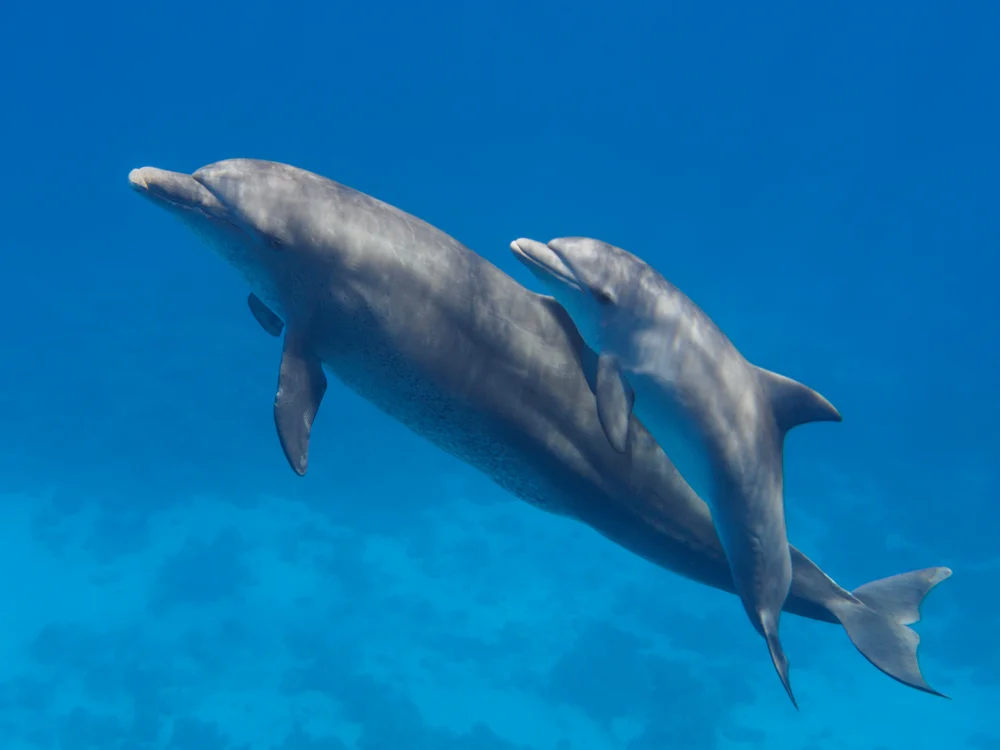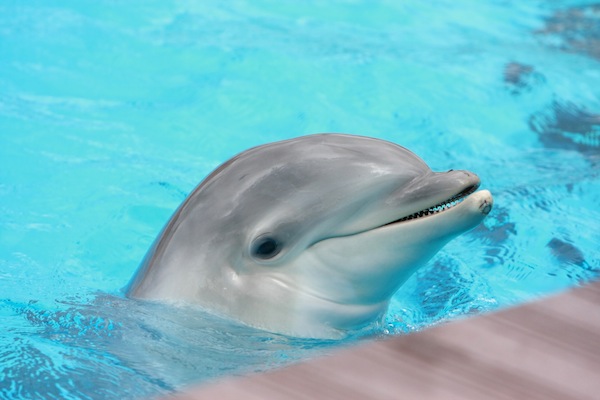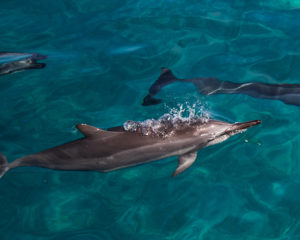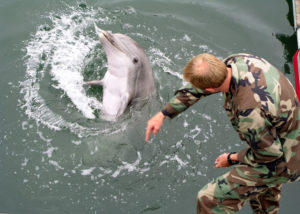
Dolphins are fascinating creatures that are widely known to be highly intelligent. These mammals do not have a specific time of year that they mate, and are known to mate and give birth year-round. Female dolphins are able to reproduce once every 2 to 6 years and the gestation for a single pregnancy is 11 months. That being said, mother dolphins or “cows” are known to be extremely attached to their young and typically only will have one calf in a lifetime. Here are some basic facts about dolphins in their youth!
What is the name for baby dolphins?
A baby bottlenose dolphin is known as a calf! When baby dolphins are born they are actually born tail first, which helps ensure that the calves do not drown during birth. Sometimes a second dolphin in the pod will assist in the birth and make sure that both the mother and calve are safe. This second dolphin is called the “auntie” dolphin, which is the only other dolphin that the mother allows around her calf during birth. The calf is nudged to the surface by its mom to take its first breath as dolphins are unable to breath underwater. It is not unusual for calves to take a while to learn how to breath above the oceans waves and swim below them. In the first days after their birth it is not unusual to see baby dolphins sticking their entire head out of the water to take a breath. Dolphin calves also spend much more time on the ocean’s surface than adult dolphins do as they learn to hold their breath for extended periods of time.
When they are underwater dolphin calves can be seen swimming right alongside their moms. They do this to stay in their mothers slipstream which helps the babies keep up with their mom and other pod members. This is actually a technique used by professional swimmers as well! Swimmers, like dolphins with their mothers, will use the wake of another swimmer to reduce their drag in the water and increase speed without using so much energy.
What do dolphins look like when they are born?
Dolphins are born in a live birth like humans! When a calf is first born it is not unusual for it to weigh between 22 to 44 pounds! They also range between 39 and 53 inches long at their time of birth. These cuties are typically a blue or gray color on top of their bodies, while their bellies are a white or light gray color. They are born with a blowhole and use it as a way to get oxygen while they learn how to navigate the water. Baby dolphins are born with hair on their snouts, which they eventually shed as they grow. It is unknown exactly why dolphin claves grow hair on their snouts, but scientists believe it served an evolutionary purpose at some point.

How long does a dolphin calf stay with its mom?
Dolphins calves are very unique in the fact that their calves remain with their mothers for years. It is known that calves and their mothers have extremely close relationships. After dolphins calves are born it takes them up to 4 months to grow their first set of teeth and 6 months to learn how to catch fish and swim properly on their own. Even after the claves learn how to hunt small fish on their own, it is not unusual for them to stay with their mothers for 3 to 6 years. In the first few months of the dolphins life, a signature whistle is used to identify the baby dolphin much like humans use names for their babies. This helps the other adult dolphins in the pod keep track of the calves.
The pods that dolphin calves swim in are known as “nursery” pods meaning that these pods mostly consist of female dolphins and their young. When the calves are born they swim in the middle of the pod so that they can be protected from predators like Orca whales or sharks. Swimming in the wake of adult dolphins also can help claves maintain a steady speed, making them harder for predators to catch.
If you are interested in learning more about dolphins, join our Dolphins and You tour where you can watch dolphins swim and play in their natural habitat!









